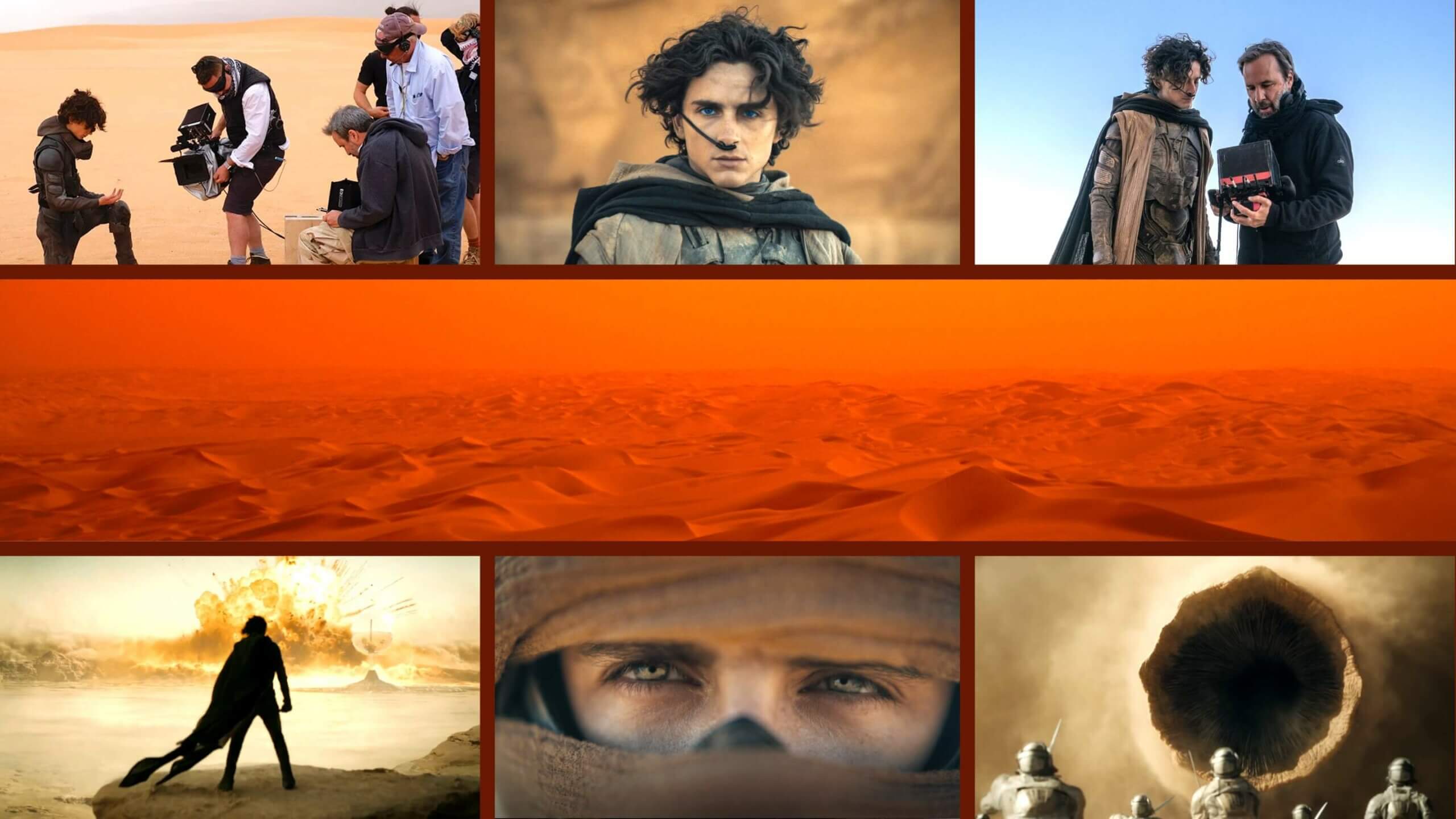They say never meet your heroes. That is, of course, unless you happen to be Denis Villeneuve. During a Q&A after the premiere of Dune: Part Two, Steven Spielberg named Villeneuve one of the best world builders in cinema. And if you’ve seen Dune: Part Two, you understand exactly why. From Blade Runner 2049 to Arrival to the world of Dune, Villeneuve’s visionary direction has created films of magnificent scale while also keeping the heart of his narratives grounded and emotional. Let’s take a look at Dune 2 behind the scenes to unravel the process of Denis Villeneuve and his incredibly talented team of filmmakers.
Dune 2 Behind the Scenes
Writing an Adaptation
Many filmmakers have been given the reins to the adaptation film rights of a novel, comic book, or other source material and have fallen short in adapting a beloved story. To many critics and fans, even David Lynch (and Universal) fell short in their 1984 adaptation of Frank Herbert’s Dune.
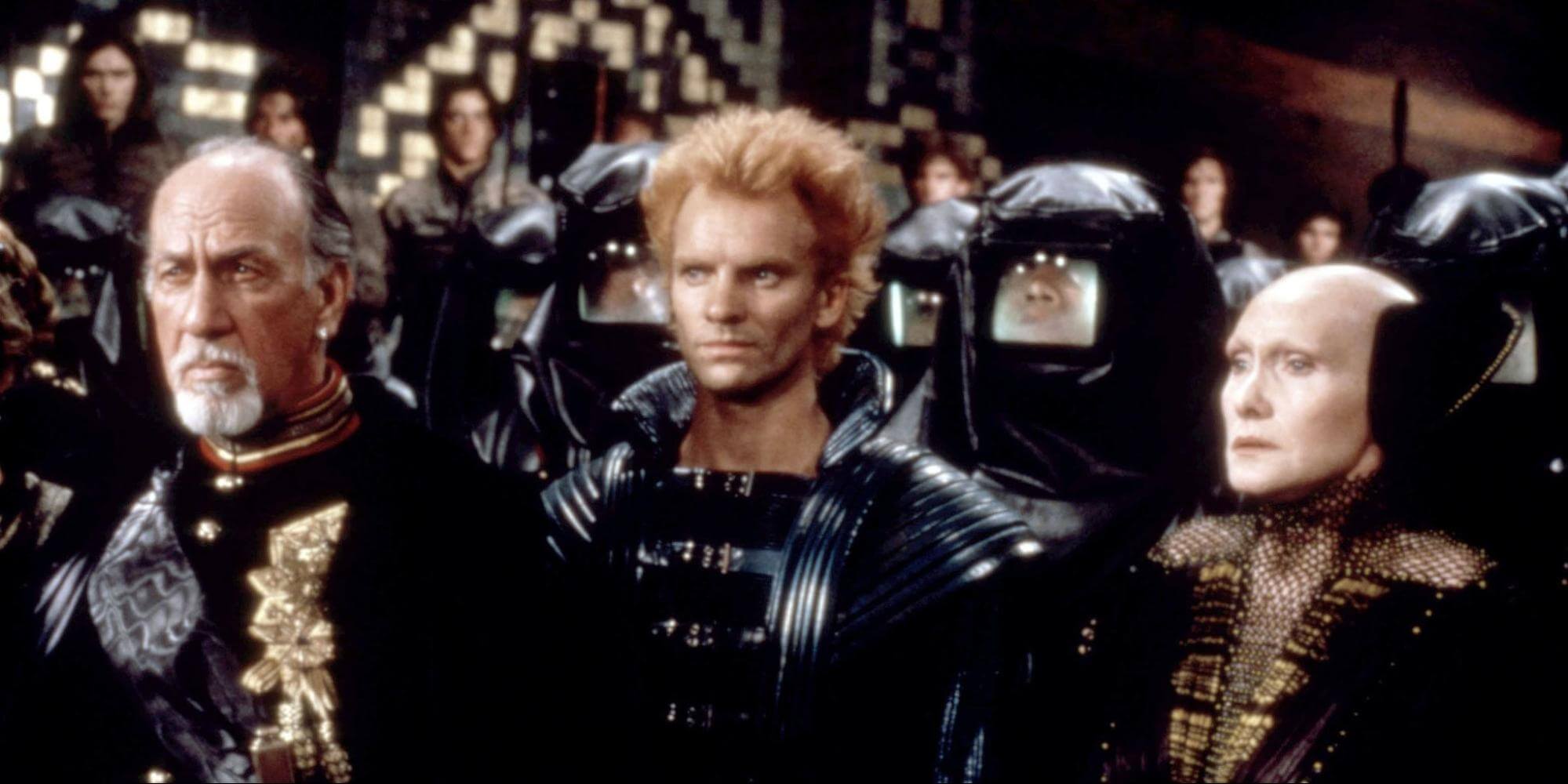
Dune (1984)
Denis Villeneuve had been a fan of the book since he was a boy so getting the opportunity to adapt it was one of the biggest dreams and scariest challenges an artist can tackle.
In interviews, he recalls a question that arose between him and collaborator Hans Zimmer: “Is it a good idea to take on your childhood dream?”
With the weight of this challenge, how did Villeneuve approach this adaptation to make Herbert’s massive story into a cinematic experience?
Many online threads and YouTube videos have gone into detail about the discrepancies between Villeneuve’s adaptation and Herbert’s novel. But Villeneuve put it best when he said, “I have not always been faithful to the novel, but I’ve always been faithful to Frank Herbert’s original intentions.”
When Herbert’s novel Dune was released, it was met with widespread acclaim, but also a different reception than Herbert anticipated. To Herbert's surprise, fans celebrated the central character, Paul Atreides as a hero.
This was not what Herbert intended. Herbert was aiming to write a cautionary tale about messianic figures and the danger of religious saviors. Villeneuve speaks on this in a Q&A below.
Dune 2 Behind the Scenes • Denis Villeneuve Interview
Knowing this, Villeneuve wrote and crafted the adaptation of Dune to emphasize Herbert’s original intention. How? By focusing on the Bene Gesserit Sisters and their manipulation throughout the plot. Villeneuve’s process in adapting the novel also focused on adapting the written story to the cinematic medium. For him, storyboarding was a crucial part of this process.
Dune 2 Behind the Scenes • Pre-Production
Storyboarding: The Last Rewrite
Growing up, Denis Villeneuve was an avid consumer of sci-fi graphic novels from Europe. Denis’ visionary eye for stunning imagery and love for storyboarding can be attributed to this upbringing.
While he does collaborate in the screenwriting process of adapting his films, Denis sees storyboarding as the last rewrite of the film before moving into production. After all, film is a visual medium, and making words in a screenplay into a visual frame is absolutely fundamental for Denis.
Storyboarding Dune: Part Two with Denis Villeneuve
Denis describes the storyboarding process as the last place for the filmmaker to dream. It is the moment right before production where compromises must inevitably be made. But in storyboarding, the Denis allows his imagination to run free of restraints, dreaming up the ideal shots that tell the best story. Denis’ iconic visuals in Dune: Part Two started in the storyboards before being executed with Dune cinematographer Greig Fraser.
dune 2 cinematography
Innovative Cinematography
Denis storyboards not only presented a unique approach to adapting Dune, but an incredibly challenging task at hand for Dune director of photography Greig Fraser. Shooting multiple planets, riding a sandworm, and shooting in only natural sunlight in the vast deserts of Jordan and Abu Dhabi were among the many challenges Fraser faced.
The film pushed Fraser to innovate new ways of shooting while also coming back to the same intention of making an interstellar tale feel visually grounded.
Lens Choices
While Fraser ultimately decided to proceed with the use of ARRI ALEXA cameras (ALEXA 65 with ALEXA Mini LF) to retain stylistic consistency with Part One, he decided to commit to shooting Part Two completely with spherical lenses.
In Part One, Fraser used the differences between spherical and anamorphic lenses to separate the worlds of the story. Everything not taking place on Arrakis was shot on an anamorphic lens for its distinct visual characteristics.
Anamorphic vs Spherical Lens Explained • Subscribe on YouTube
However, Part Two focuses on the second part of Paul Atreides’ journey as ventures into the desert and becomes one of the Fremen. Fraser, looking to convey this story movement visually, shot Part Two completely spherical.
Infrared Techniques
One of the most innovative techniques Fraser used in Part Two was the use of infrared cinematography. As the story progressed into the introduction of Feyd-Rautha and the Harkonnen planet of Geidi Prime, Denis needed to find a way to distinguish this world from the world of Arrakis drastically.
His initial idea was to shoot in black and white. Fraser loved this idea so much, he decided to push it even further and shoot infrared.
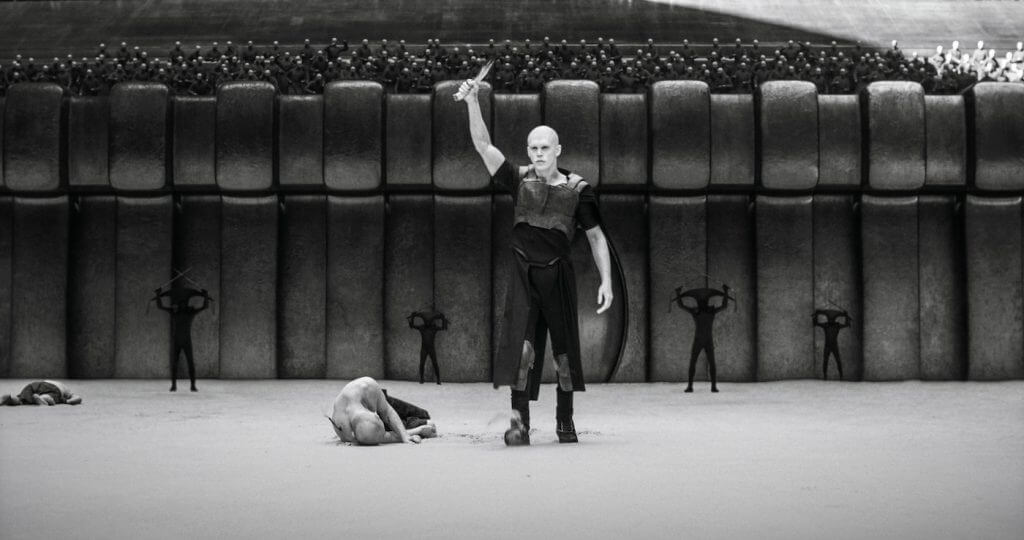
Greig Fraser Cinematography Techniques
Fraser remembered that the ALEXAs they were using captured infrared light. So, Fraser and his team worked on modifying the ALEXA cameras, removing the regular IR filters that blocked IR light and bleeding. In their place, a specialized filter was installed directly in front of the lens that blocked almost all visible light and captured only the infrared spectrum.
Greig Fraser and the Cinematography of Dune: Part Two
The product? One of the most visually memorable scenes in the entire film. The collaboration of Villeneuve, Fraser, and his team is an example of how an initial concept such as shooting in black and white can be pushed and innovated to create something truly unique for audiences.
Dune 2 Behind-the-scenesof Production Design
World Building Production Design
Among the incredibly talented team of artists and filmmakers that created Dune: Part Two is production designer Patrice Vermette. Let’s take a look at how Vermette approached creating each planet.
Arrakis
The vast, sprawling desert of Arrakis was created by shooting in real locations of both Abu Dhabi and Jordan's Wadi Rum. Vermette says that the wide shots of desolate sands and dunes of Arrakis were shot in Abu Dhabi. However, anytime you see any rock formation on the desert planet, it was shot in Jordan.
Behind the scenes of Dune: Part Two in Abu Dhabi
While Herbert didn’t write so many details about the design within the planet Arrakis, Vermette put himself in the role of the architect. With blistering heat and harsh winds, Vermette designed Arrakis’ capital city with buildings that could withstand the harsh winds, blistering heat, and the relentless desert.
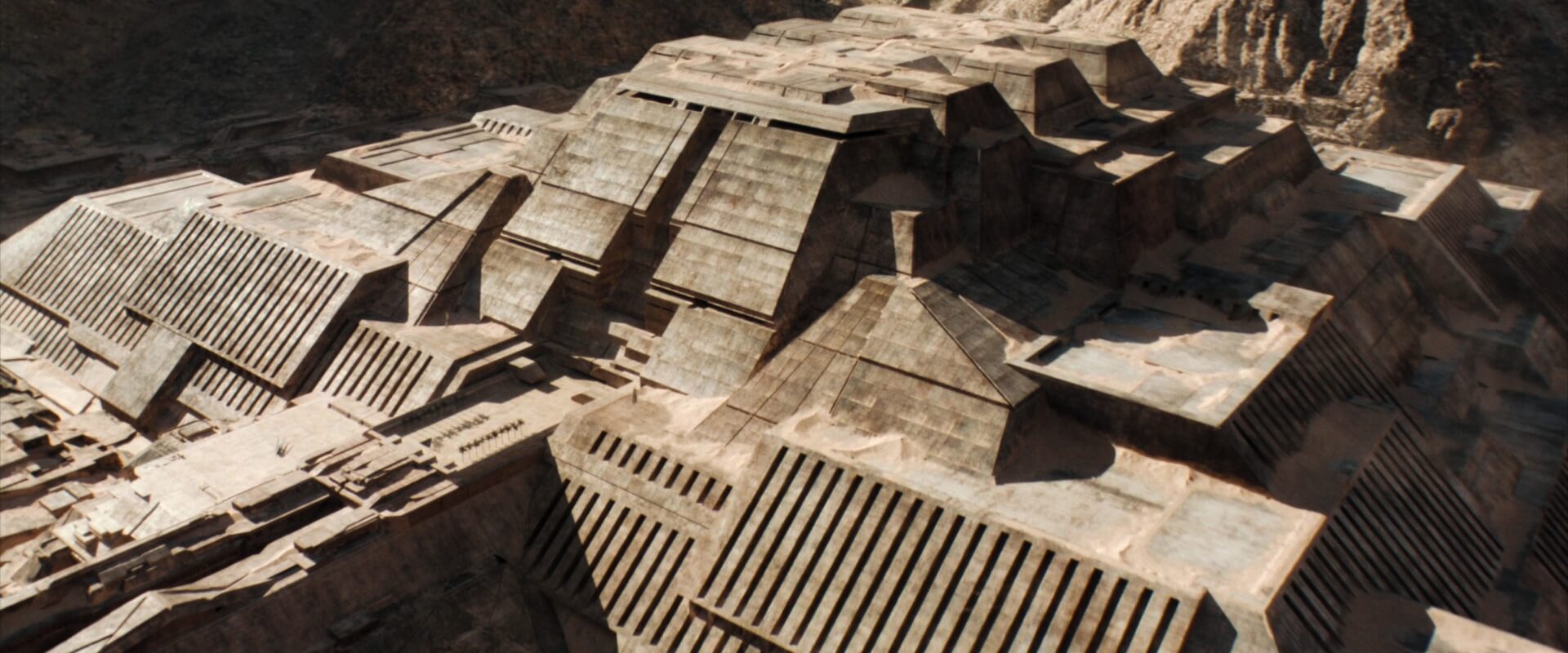
Capital city of Arrakis • Arrakeen
Angular, thick rock walls could face these conditions while large light wells in interior spaces would allow light to enter while keeping as much heat out. All design came back to how it would function on Arrakis.
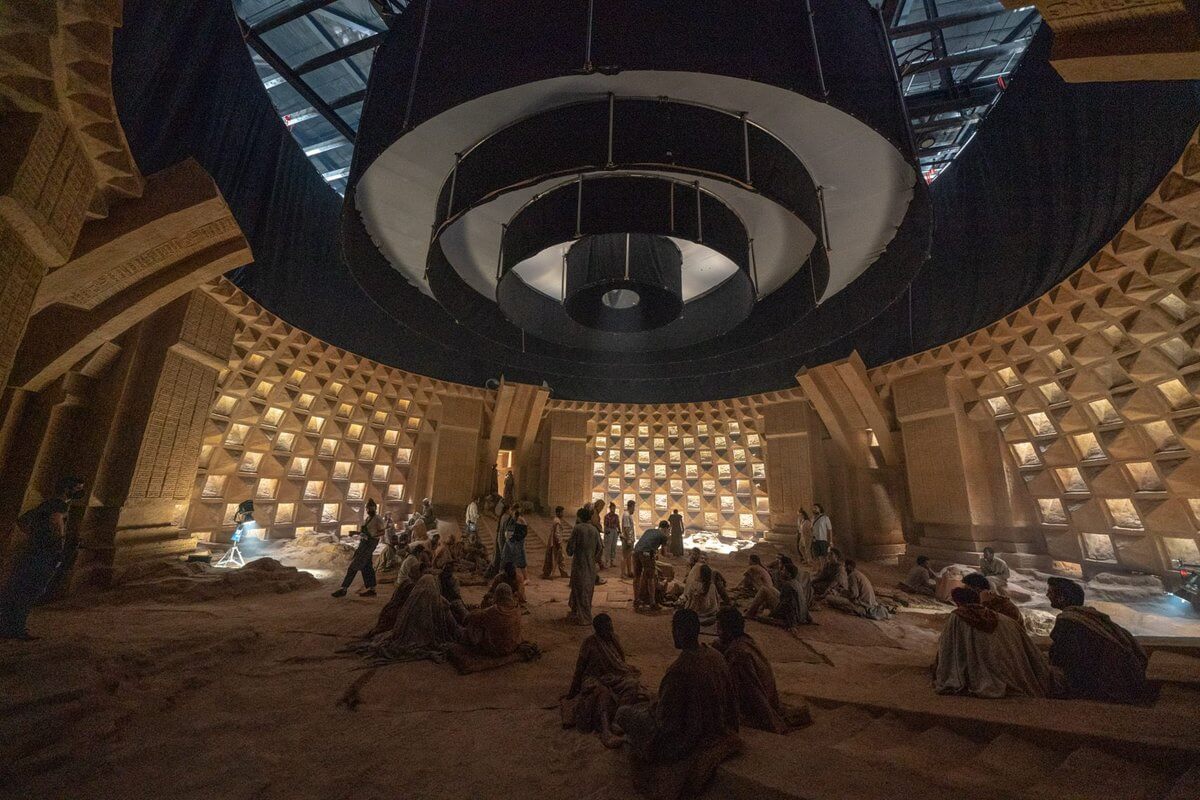
Dune: Part Two Production Design
Giedi Prime
The Harkonnen world of Geidi Prime is introduced to us during the gladiator-like birthday celebration of Baron Feyd-Rautha. While Greig Fraser’s infrared cinematography immediately created a bleak, otherworldly atmosphere — Vermette designed the set to reflect the oppressive and ghoulish nature of House Harkonnen.
The set was built at Origo Film Studios in Budapest. While in the city, Vermette found inspiration from Hungarian septic tanks and designed the walls of the arena to resemble them.
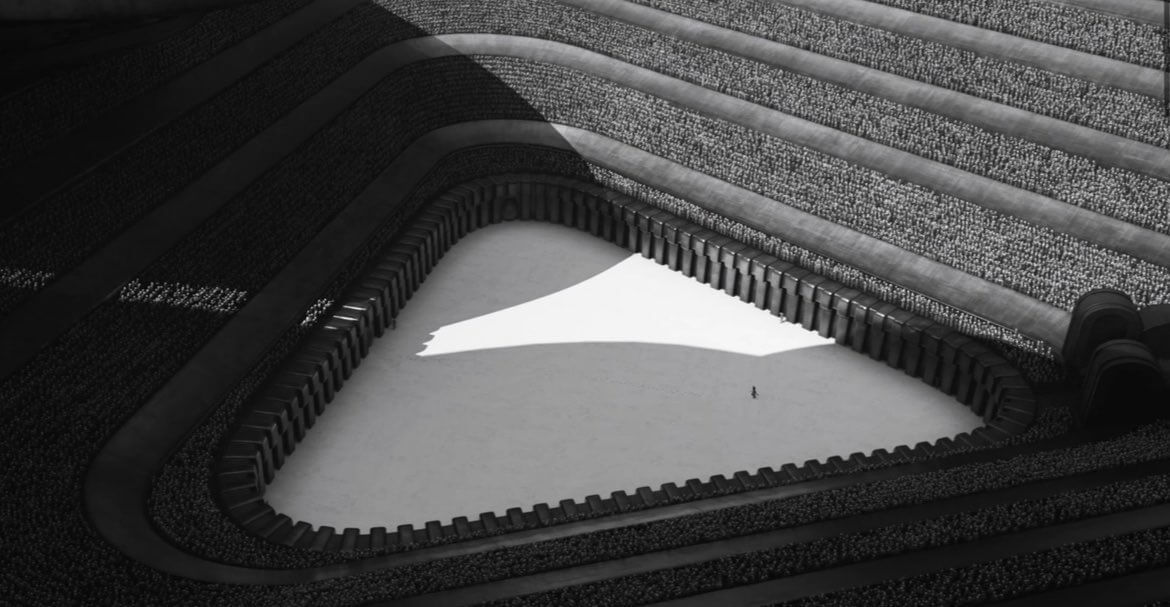
Geidi Prime Production Design
Corrino Imperial Household
Although we do not see it often in Part Two, Vermette had high hopes for the setting of the Corrino Imperial Household — the home of The Emperor and Princess Irulan. One of the biggest inspirations for Vermette as a designer was Italian architect and designer Carlo Scarpa.
When they began dreaming up what the Imperial planet would look like, Vermette showed Villeneuve images of Scarpa’s iconic design of Brion Cemetery in Italy.
Villeneuve immediately knew this is where they needed to shoot.
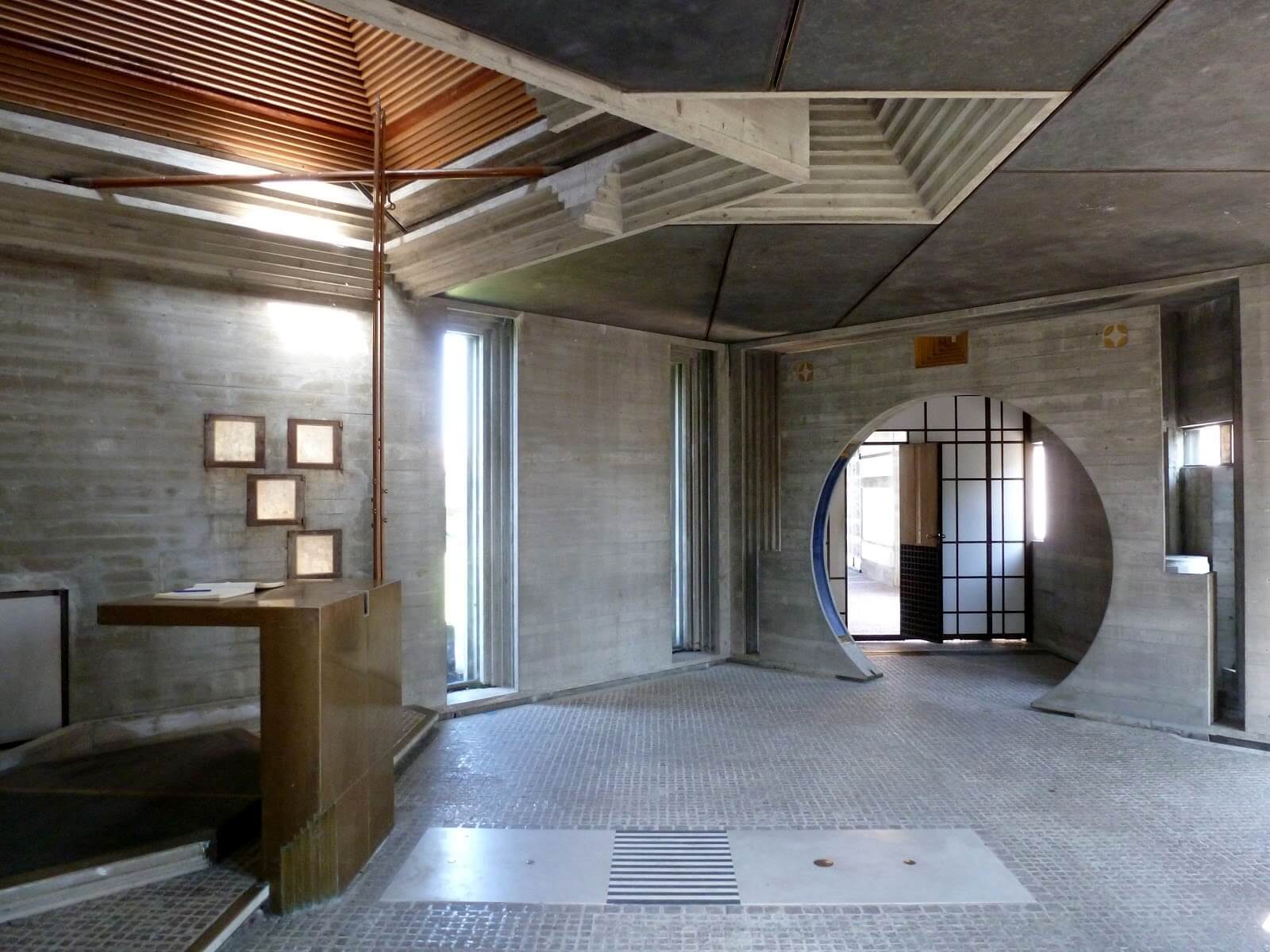
Brion Cemetary by Carlo Scarpa
Vermette’s architectural influences and story-driven design make each planet in the world of Dune feel distinct yet somehow a part of the same universe. With each planet, Vermette created an atmosphere that immerses the audience deeper into the story. Within these worlds, Vermette also collaborated with the special effects team to bring unique stunts, effects, and complex sets to life.
Related Posts
Stunts and SFX of Dune: Part Two
Special Effects
So many science fiction and comic book films rely heavily on CGI for their VFX. What makes Dune: Part Two so invigoratingly immersive is Villeneuve’s commitment to practical effects. Few stunts prove this better than the scene of Paul Atreides’ first sandworm ride.
After reading the scene of Paul riding the sandworm, cinematographer Greig Fraser (along with every department head) asked one question, “How the hell are we going to do that?”
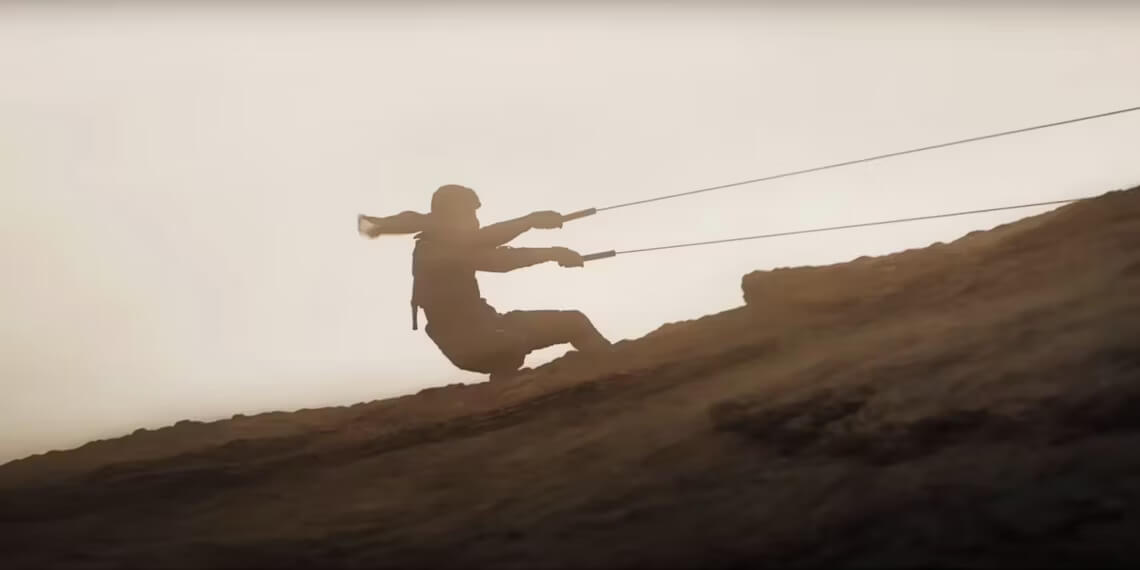
Dune: Part Two • Sandworm Riding Scene
Villeneuve began by visualizing and then explaining how a Fremen would actually go about riding a sandworm. Pulling from the book as well as his imagination, Villeneuve imagined the physical steps and challenges it would take to ride a sandworm.
He pulled inspiration from extreme sports like big wave surfing, snowboarding, and others to visualize this event. All of this led to the idea of shooting this practically. That’s right — everything in this scene (except the sandworm obviously) was shot in camera. Here’s Villeneuve breaking down the rig they built as well as how they achieved the stunt itself.
'Dune: Part Two' Director Denis Villeneuve Breaks Down the Sandworm Scene
To recap Villeneuve’s breakdown, all it took to achieve the sandworm scene was a few months of work from a dedicated team, a customized, motorized platform dressed in sandworm skin, the repetitive construction and collapse of a man-made sand dune, an extremely coordinated stuntman falling down a river of sand, and perfect timing with the best angle of sunlight.
Easy enough right? Well, the final result of the scene landed one of the best compliments any filmmaker can get from Steven Spielberg. Speilberg called the scene “one of the best things he’s ever seen.”
For any cinephile, Dune: Part Two gives a lot of hope for the future of the craft. It is a testament to what can be achieved when larger budgets, resources, and time are given to visionary and committed artists like Denis Villeneuve and the entire team of filmmakers who gave us Dune: Part Two.
It’s a film that demands to be seen in cinemas, captivates audiences, and inspires the industry to keep pushing the craft forward.
Up Next
Best Denis Villeneuve Movies, Ranked
If you take a look at Denis Villeneuve’s filmography, he’s proving to be one of the greatest filmmakers of science fiction in cinema history. Dune: Part One and Part Two, Blade Runner 2049, and Arrival is an impressive resume. But where do they rank against each other?
Up Next: Villeneuve's Best Movies →
Showcase your vision with elegant shot lists and storyboards.
Create robust and customizable shot lists. Upload images to make storyboards and slideshows.
